Alexandria travel guide: Things to Do in Alexandria, Egypt
Where ancient whispers mingle with modern beats, Alexandria awakens to many things to do in Alexandria, Egypt. In this vibrant Egyptian city, history isn’t confined to museums – it pulsates in every cobblestone and whispers from every archway. Step into Alexandria, a city where the past and present seamlessly intertwine, offering a captivating blend of history and modern charm. Here’s your personalized guide to things to do and enchanting activities that await you in Alexandria, Egypt. Let this be your guide to unlocking its captivating secrets and weaving your own tapestry of adventure.
List of Things to Do in Alexandria, Egypt:
1- Catacombs of Kom El-Shoqafa:
Catacombs of Kom El-Shoqafa is one of the great highlights and best things to do in Alexandria, Egypt. The catacombs are huge Egyptian tombs and royal cemeteries with Ptolemaic and Roman influences. Kom El-Shoqafa Catacpmbs are one the largest Roman burial sites not just in Alexandria but in Egypt. These catacombs started as a private tomb for a wealthy family, then became a public cemetery. The catacombs house more than 300 tombs.
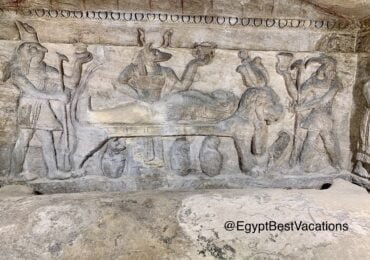
Catacombs mean underground tunnels. Kom El-Shoqafa means mound of shards because the area used to contain mounds of jars made of clay. These jars were left by those visiting the tombs, who would bring food and wine to dine during their visit and left them there. These catacombs were constructed between the 2nd and the 4th century AD, during the Roman era. They were considered one of the seven wonders of the Middle Ages. Scholars believe that these catacombs were made for a single wealthy family, but it is not clear why the site was expanded as a public cemetery. The Catacombs of Kom El-Shoqafa were discovered when a donkey accidentally fell into the entry of the tomb in 1900.
Plan your trip: Alexandria day trip from Cairo
2- Citadel of Qaitbay:
The Citadel of Qaitbay in Alexandria is one of the most important fortifications in Egypt. It was constructed by Sultan Al-Ashraf Qaitbay to defend Egypt against the Ottomans/Turks. Qaitbay built lots of forts and citadels along the Mediterranean coast to defend Egypt against any foreign invasions. Qaitbay’s Citadel in Alexandria is located on the northern tip of Pharos Island. It was constructed exactly on the site of the famous Light House of Alexandria (one of the seven ancient wonders).

The construction of the citadel started in 882 A.H/1478 AD and finished in 884 A.H/1480 AD. The citadel was well maintained due to its strategic location. Ottomans/Turks also used the citadel as a shelter as they did with almost all of the other citadels in Egypt. They maintained it with infantry, masons, carpenters, artillery, etc.
The citadel fell into the hands of the French soldiers in 1797 led by Napoleon Bonaparte. Mohamed Ali Pasha (1805-1849) restored the citadel and maintained it with modern weapons. Then, the citadel was neglected when the British colonized Egypt in 1882.
3- Library of Alexandria:
The Library of Alexandria is a great library and culture center, not only in Alexandria but on the Mediterranean coast and the whole world. The New Library of Alexandria contains a conference center, specialized libraries for maps, multimedia, the blind and visually impaired, young people, and children. It contains also four museums and four art galleries for temporary exhibitions. As well as 15 permanent exhibitions, a planetarium, and a manuscript restoration laboratory.
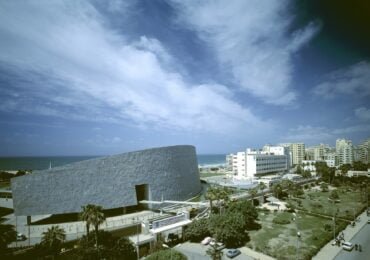
The ancient Egyptians had a great deal of knowledge in every field. Ancient Egyptian libraries are the most important source of this knowledge. Egyptians had two different types of libraries. The first type was called ‘Pr-Madjet’ or ‘House of Books.’ This library was like our public library nowadays, so it was found in schools, colleges, and public areas.
Plan your tour: Alexandria highlights tour
According to the official website of the library, www.bibalex.org, the main mission of the library is to be a center of excellence in the production and dissemination of knowledge and to be a place of dialogue, learning, and understanding between cultures and people.
4- The Roman Amphitheatre:
The Roman Amphitheatre in Alexandria is one of the great highlights and top things to do in Alexandria, Egypt. The Amphitheaters were not just popular in Egypt, they were popular in other countries as Italy, Greece, Jordan and Turkey.
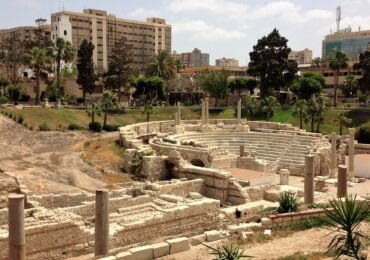
This Roman Amphitheatre is the only one of its type that exists in Egypt. The Amphitheatre is located in Kom El-Dikka in the northern section of Alexandria. Amphitheatre is a Greek word that means double theatre. Kom in Arabic means hill, while Dikka means benches, so the two words together mean the “Hill of Benches”. Maybe due to the benches of the Amphitheatre.
According to studies, the Roman Amphitheatre in Alexandria was in action to hold events until the 7th century AD. The excavations showed that the Amphitheatre was in use during the Roman, Byzantine and Early Islamic eras in Egypt. It was used for many things and a new study suggests that it was used as the House of the Parliament or the House of the Representatives. Other suggestions say it was used as a conference hall. Now the Amphitheatre still holds some music concerts or parties.
5- Pompey’s Pillar in Alexandria:
Many of the ancient historians did not tell us more details about the “Pompey’s Pillar” but about the buildings that stood nearby and have disappeared now. The Pompey’s Pillar lies close to the famous Roman Catacombs of Kom El-Shoqafa. The hill on which the pillar is erected was covered with temples and houses a long time before the Roman era. It was the place of the Citadel of Rhakotis. A temple was dedicated to Osiris-Serapis was built on the mountain.
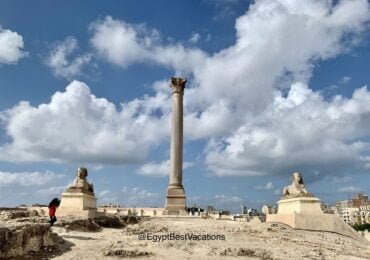
The Pompey’s Pillar is 84 feet high and about 7 feet thick. It is made of red granite from Aswan. The substructure is made up of blocks that have been taken from other buildings. The pillar may be erected by Emperor Diocletian, about 297 AD. There is a four-line Greek inscription to him on the granite base on the western side.
Plan your tour: Alexandria highlights tour from Port Alexandria
6- The Graeco-Roman Museum:
The Graeco-Roman Museum stands as a captivating testament to the city’s rich history, offering a window into the remarkable Hellenistic and Roman eras. This museum is a treasure trove of artifacts that unveil the cultural tapestry woven by the Greeks and Romans in ancient Alexandria. The museum itself is a work of art, seamlessly blending modern design with classical elements. As you wander through its halls, admire the architectural harmony that enhances the overall experience, echoing the fusion of past and present found within its walls.
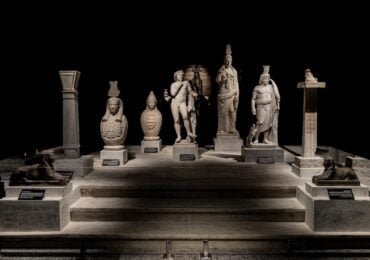
The Graeco-Roman Museum is not merely a repository of artifacts; it serves as an educational hub. Engage with interactive displays, educational programs, and lectures that bring history to life, making it an enriching experience for visitors of all ages. In the Graeco-Roman Museum, Alexandria’s past comes alive, offering a captivating narrative that echoes through the corridors of time. This cultural gem beckons history enthusiasts, curious travelers, and scholars alike to unravel the mysteries of an ancient world preserved within its walls.
7- Montazah Palace:
Nestled along the azure shores of the Mediterranean, Montazah Palace emerges as a regal jewel in Alexandria’s crown. This seaside haven, once the summer retreat of Egyptian royalty, enchants visitors with its exquisite architecture, lush gardens, and a captivating blend of history and natural beauty.
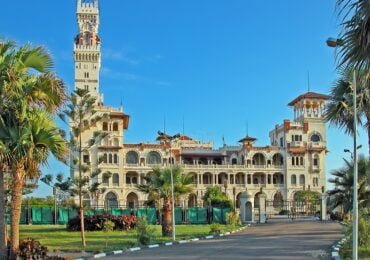
Montazah Palace, with its origins dating back to the reign of King Fuad I in the early 20th century, served as a tranquil escape for the Egyptian royal family. Today, it stands as a testament to an era of opulence and leisure. As you approach the palace, be prepared to be awestruck by its architectural grandeur. A fusion of Turkish and Florentine styles, the palace boasts intricate details, elegant archways, and stunning domes that reflect the sophistication of its design.
Today, Montazah Palace warmly welcomes visitors, offering guided tours that provide insight into its storied past. Whether admiring the architectural details, strolling through the gardens, or contemplating the sea views, every moment spent at Montazah Palace is a journey into a bygone era.
Plan your Egypt vacation: 5-day Egypt tour to Cairo, Luxor and Alexandria
In Montazah Palace, Alexandria gracefully preserves its royal legacy against the enchanting backdrop of the Mediterranean. This coastal retreat invites you to step back in time, where the whispers of history and the beauty of nature converge in an experience that is both regal and rejuvenating
8- Alexandria National Museum:
Alexandria National Museum stands as a custodian of the city’s diverse and illustrious past. This cultural gem, housed within a beautifully restored Italian-style palace, invites visitors on a captivating journey through the centuries, offering a comprehensive glimpse into the history and cultural tapestry of Alexandria.
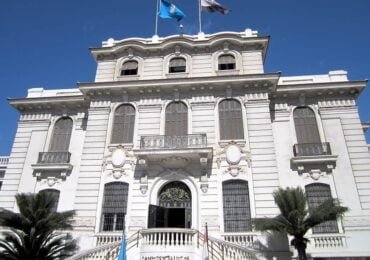
The museum itself is a masterpiece, occupying a meticulously restored early 20th-century palace. Its elegant architecture, characterized by graceful arches and ornate detailing, provides a fitting backdrop for the historical treasures it houses.
Whether you are a history enthusiast, a scholar, or a curious traveler, the Alexandria National Museum promises an enriching exploration of the city’s multifaceted history. In the halls of the Alexandria National Museum, the stories of Alexandria unfold like chapters in a captivating book. It is a cultural treasure trove that invites you to connect with the city’s legacy, leaving you with a profound understanding of Alexandria’s enduring significance in the tapestry of human history.
9- Mosque of Mursi Abu El-Abbas:
In the heart of Alexandria, stands the majestic Mosque of Abu El-Abbas al-Mursi. This spiritual sanctuary, with its towering minarets and intricate Islamic architecture, invites visitors to experience the serenity and cultural richness that define this revered site.
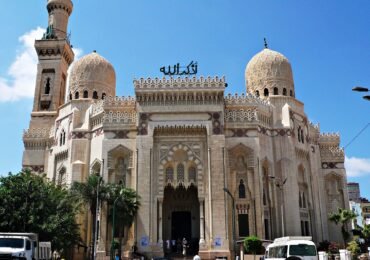
The Mosque of Abu El-Abbas al-Mursi is a visual masterpiece, boasting stunning Islamic architecture that reflects a blend of Andalusian, Ottoman, and Mamluk styles. The mosque’s soaring minarets and intricately adorned domes make it a standout gem amid Alexandria’s diverse landmarks.
Named after the revered Andalusian Sufi saint, Abu El-Abbas al-Mursi, the mosque holds deep spiritual significance. Pilgrims and locals alike gather to seek solace, offer prayers, and connect with their faith in this sacred space. Whether you come to offer prayers, explore the architectural marvels, or simply soak in the spiritual ambiance. The Mosque of Abu El-Abbas al-Mursi promises a profound and enriching visitor experience. It is a place where the sacred and the historical converge, leaving an indelible mark on those who have the privilege to experience its grace.
The Mosque of Abu El-Abbas al-Mursi stands not only as a testament to Islamic heritage but also as a beacon of peace, unity, and cultural appreciation in this vibrant Mediterranean city.
Plan your Egypt tour: 6-day to Cairo, Luxor and Alexandria
10- Royal Jewelry Museum:
The Jewelry Museum stands as a testament to the artistry and opulence of Egypt’s rich cultural heritage. Housed within the former palace of Princess Fatma al-Zahra, this museum beckons visitors into a world of exquisite craftsmanship, where precious gems and intricate designs narrate stories of bygone eras. The Jewelry Museum occupies a historic palace that once belonged to Princess Fatma al-Zahra, daughter of Khedive Ismail, adding an extra layer of regality to its ambiance. The palace itself is an architectural marvel, serving as a fitting setting for the treasures it holds.
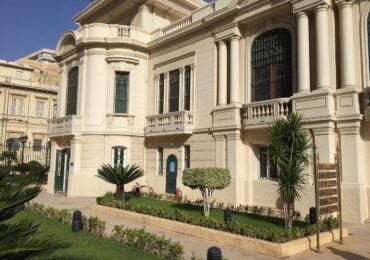
Step into a realm of glamour as the museum showcases a stunning array of jewelry, some of which belonged to the royal family. Ornate necklaces, bracelets, and tiaras adorned with diamonds, pearls, and gemstones provide a glimpse into the extravagant lifestyle of Egypt’s elite.
For those seeking an immersive journey through Egypt’s jewelry history, the Jewelry Museum in Alexandria promises a captivating experience. Visitors can appreciate not only the aesthetic beauty of the artifacts but also the cultural significance embedded within each precious jewel.
11- Corniche Stroll:
Take in the lively atmosphere of Alexandria by strolling along the Corniche. With the Mediterranean Sea as your backdrop, enjoy stunning views, local street food, and the vibrant energy that characterizes the city’s waterfront. The Corniche is not just a walk; it’s an experience of Alexandria’s soul.
12- Culinary Exploration:
Immerse yourself in Alexandria’s diverse gastronomy by exploring traditional seafood dishes along the Corniche and navigating aromatic street markets. The city’s culinary delights offer a delightful journey for your taste buds, introducing you to the rich tapestry of flavors that Alexandria has to offer.
13- Mediterranean Sunset:
Conclude your day by witnessing the breathtaking Mediterranean sunset. Whether from the Citadel, the Corniche, or a seaside café. The hues of the setting sun over the sea create a magical backdrop, leaving you with lasting memories of your exploration through Alexandria. This tranquil moment encapsulates the essence of Alexandria’s beauty, where the past meets the present in a harmonious blend.
In Alexandria, every corner holds a unique story, and each site reveals a piece of its rich heritage. As you venture through its streets and uncover its treasures, you will find yourself captivated by the timeless allure of this historical city by the sea. Alexandria awaits, ready to share its magic with those eager to embrace its history and charm.

